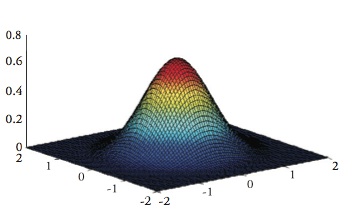SPH Corrección de la deficienccia de límites para la mejora de condiciones de contornos en superficies deformables
DOI:
https://doi.org/10.25043/19098642.37Palabras clave:
hidrodinámica de partículas suavizadas, condiciones de frontera de SPHResumen
La Hidrodinámica de Partículas Suavizadas (Smoothed Particle Hydrodynamics, SPH) es un método CFD Lagrangiano sin malla (Mecánica de Fluidos Computacional, CFD). El método SPH frecuentemente utiliza partículas estáticas virtuales para corregir las deficiencias integrales que ocurren cerca de las fronteras. Estas partículas virtuales, aunque son útiles en la mayoría de los casos, pueden ser difíciles de implementar para objetos que experimentan grandes deformaciones. Como alternativa a las partículas virtuales, se presenta un algoritmo de fuerza repulsiva que emula indirectamente la presencia de las partículas virtuales en la ecuación de momento del método SPH.Descargas
Referencias bibliográficas
LUCY L. B. (1977), 'Numerical approach to testing in the fission hypothesis' in Astronomical Journal, 82 pp. 1013:1024.
GINGOLD R. A. AND MONAGHAN J. J. (1977), 'Smoothed Particle Hydrodynmics: Theory and Application to Non-spherical stars' in Monthly Notices of the Royal Astronomical Society, 181:375-389.
MONAGHAN J. J. (1994). 'Simulating free surface flow with SPH' in Journal of Computational Physics, 110:399-406.
MONAGHAN, J. J.; KOS, A.; ISSA, N.. (2003) 'Fluid Motion Generated by Impact' in Journal of Waterway, Port, Coastal & Ocean Engineering, Nov. 2003, Vol. 129 Issue 6, pp. 250-259.
MONAGHAN, J. J. AND KAJTAR, J.B. (2009) 'SPH particle boundary forces for arbitrary boundaries' in Computer Physics Communications, 2009, 180:1811–1820.
LIBERSKY L. D., PETSCHECK A. G., CARNEY T. C, HIPP J. R. AND ALLAHDADI F. A. (1993), 'High strain Lagrangian hydrodynamics-a three-dimensional SPH code for dynamic material response' in Journal of Computational Physics, 109:67-75.
RANDLES P.W., AND LIBERSKY L. D. (1996), 'Smoothed particle hydrodynamics some recent improvements and applications' in Computer Methods in Applied Mechanics and Engineering, 138:375-408.
LIU, G. R. AND LIU, M. B.(2003). Smoothed Particle Hydrodynamics – a meshfree particle method, Toh Tuck Link, World Scientific Publishing.
LIU G. R. AND GU Y. T. (2001), 'A local radial point interpolation method (LR-PIM) for free vibration analyses of 2-D solids'. Journal of Sound and Vibration, 246(1):29-46.
LIU M. B., LIU G. R. AND LAM K. Y. (2002), 'Investigations into water mitigations using a meshless particle method' in Shock Waves 12(3):181-195.
FELDMAN J. AND BONET J. (2007) 'Dynamic refinement and boundary contact forces in SPH with applications in fluid flow problems' in Int. J. Numer. Meth. Engng 2007; 72:295–324.
MONAGHAN, J. J. AND LATTANZIO J. C. (1985) 'A refined particle method for astrophysical problems' in Astronomy and Astrophysics, 149:135-143.
P. G. TAIT, (1888) Physics and Chemistry of the Voyage of H.M.S. Challenger, Vol. 2, Part 4 HMSO, London.

Descargas
Publicado
Cómo citar
Número
Sección
Licencia
The authors who publish in this Journal certify that:
- The work submitted for publication in The Ship Science and Technology journal, was written by the author, given that its content is the product of his/her direct intellectual contribution.
- All data and references to material already published are duly identified with their respective credits and are included in the bibliographic notes and quotations highlighted as such.
- All materials submitted for publication are completely free of copyrights; consequently, the author accepts responsibility for any lawsuit or claim related with Intellectual Property Rights thereof, Exonerating of responsibility to The Science and Technology for the Development of Naval, Maritime, and Riverine Industry Corporation, COTECMAR.
- In the event that the article is chosen for publication by The Ship Science and Technology journal, the author state that he/she totally transfers reproduction rights of such to The Science and Technology for the Development of Naval, Maritime, and Riverine Industry Corporation, COTECMAR.
- The authors retain the copyright and transfer to COTECMAR the right of publication and reproduction of the work which will be simultaneously subject to the Creative Commons Attribution License (CC - BY), which allows the license to copy, distribute, display and represent the work and to make derivative works as long as it recognizes and cites the work in the manner specified by the author or licensor.
- For more information about the Creative Commons Attribution License (CC -BY) and his use and scope, please visit the following web page https://creativecommons.org/licenses/by-sa/4.0/legalcode








